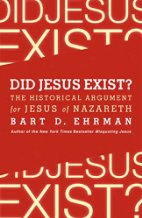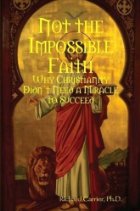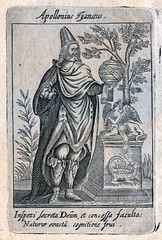Updated and slightly revised about 3 hours after original posting.
This is crazy. A couple of blokes, laymen, have a hobby. They love to engage with biblical scholarly literature and to learn and understand all they can about a book that is important to Western culture. They enjoy sharing what they read with others who have similar interests. I always understood scholars were too busy to be bothered with whatever lay people did with any of their ideas. Who cares what every Trish, Dot and Hanna think and say?
So why do a few scholars sometimes go out of their way to publicly attack this blog? Why the insults and even the curses wishing our children dead (which even their students learn to repeat*)?
Why should anyone care if we — or anyone else — think Jesus was probably not historical or if we say we can’t decide one way or the other on the question? How can we explain scholars resorting to insult because we are less certain and more questioning about some details?
I have said repeatedly that my interest is not in mythicism per se but in exploring Christian origins and understanding the nature and origins of the biblical literature. I cannot prove Jesus did not exist and have no interest in bothering to try.
I am as much, and no more, a mythicist as is Professor Thomas L. Thompson. Thompson does not argue for or against the historicity of Jesus but he does argue a case for understanding the biblical literature and the ideas within it in a certain way, and he does from time to time point to the potential implications this understanding has for the question of the historicity of Jesus.
My arguments about methodology are for most part an application of Thompson’s and other minimalist scholars logic to the New Testament.
Accordingly I have questioned the fundamental assumptions of NT scholarship that addresses the historical Jesus and Christian origins. I have also pointed out the logical fallacies riddling many of those scholarly studies.
But I have also shared much of what I have found most interesting in those learned works.
I — and even moreso Tim — have spent a good amount of time learning the fundamentals of the biblical languages, using the standard scholarly references, and attempting to keep up with current ideas as well as digging into those of the past. It’s a hobby. But we are serious about it and love to share what we learn or wonder about.
We stand outside the guild. We have not been trained in the “correct answers” and “the right questions” to ask or the “correct way” to frame the discussions.
One sometimes wonders if it’s because we have done a little homework and have a fair idea of what we are talking about when we apply critical analysis to certain modern scholarly ideas that some scholars find our views threatening. We stand outside the guild. We have not been trained in the “correct thoughts” and “the right questions to ask”. It has not escaped our notice the way some scholars seem incapable of breaking away from stock phrases and concepts in their arguments and appear to be most uncomfortable with criticisms that undermine those taken-for-granted ways of expressing the arguments and framing the debates.
Enter mythicism
If we question the foundational assumptions and standard “logic” of some NT scholarship, what is left? What would replace it? Continue reading “The crazy attacks on Vridar”
Like this:
Like Loading...










